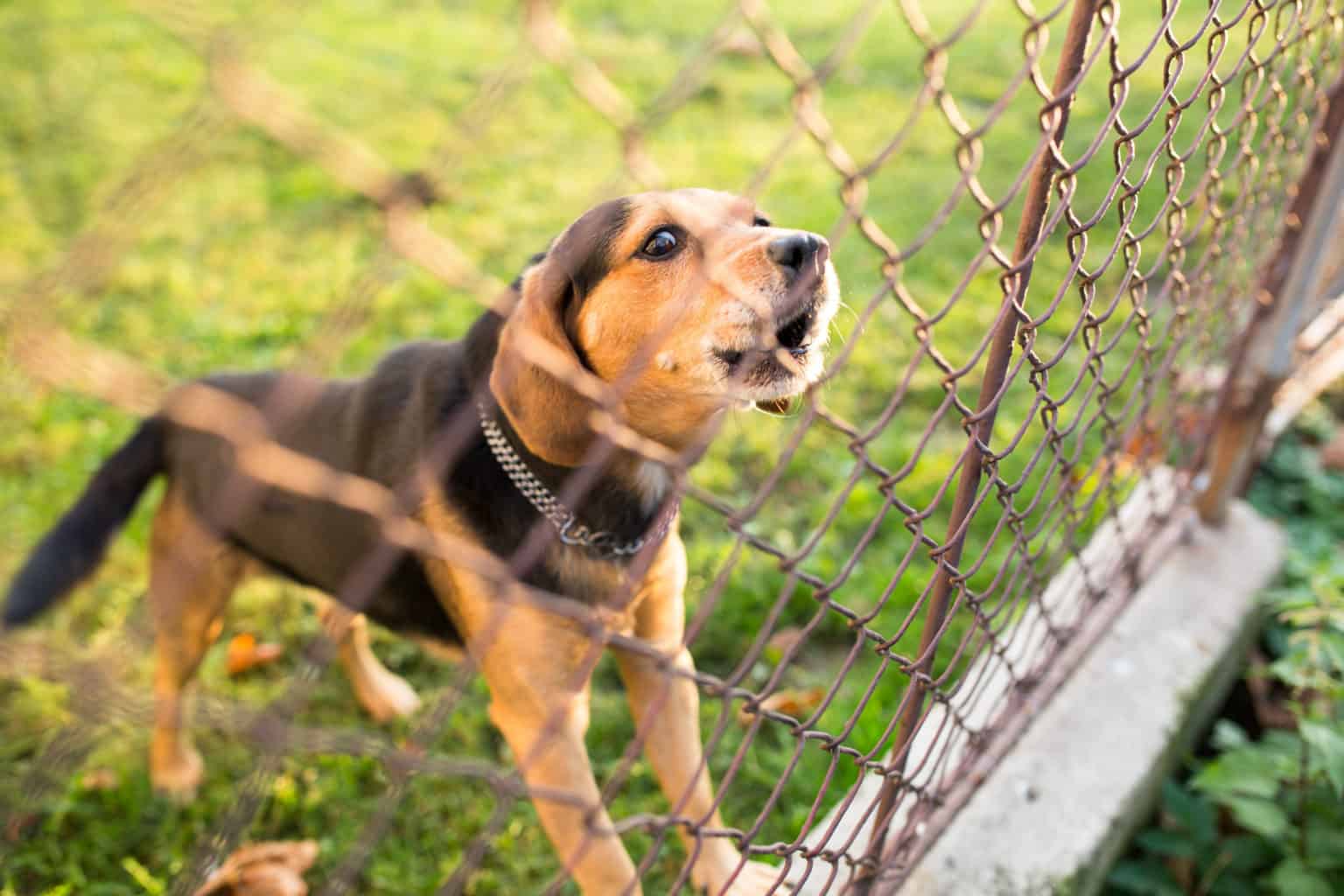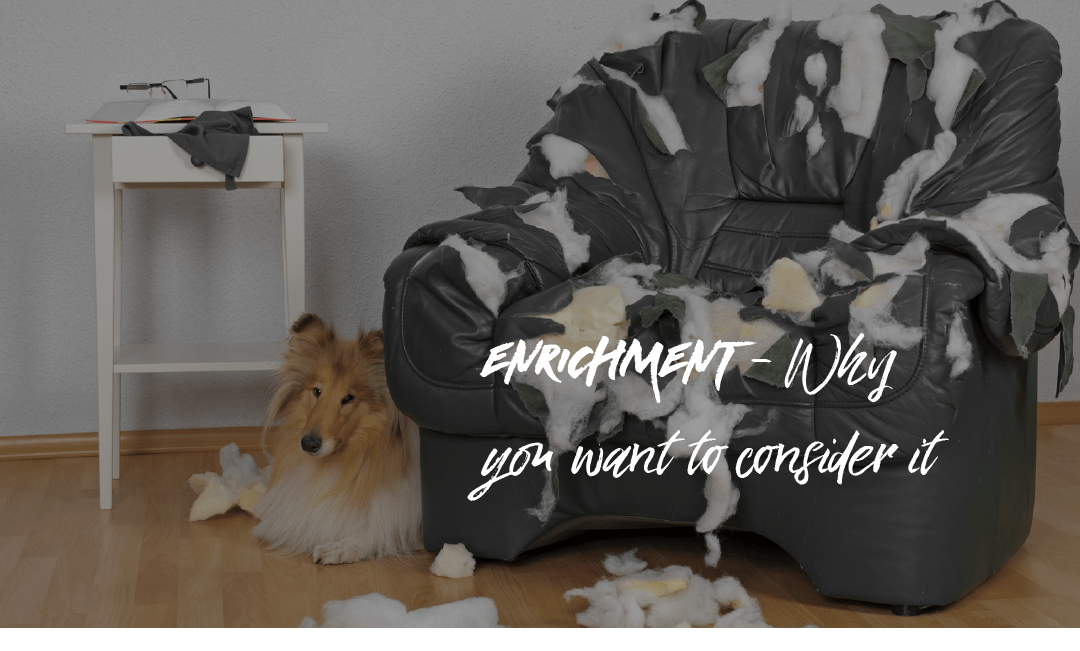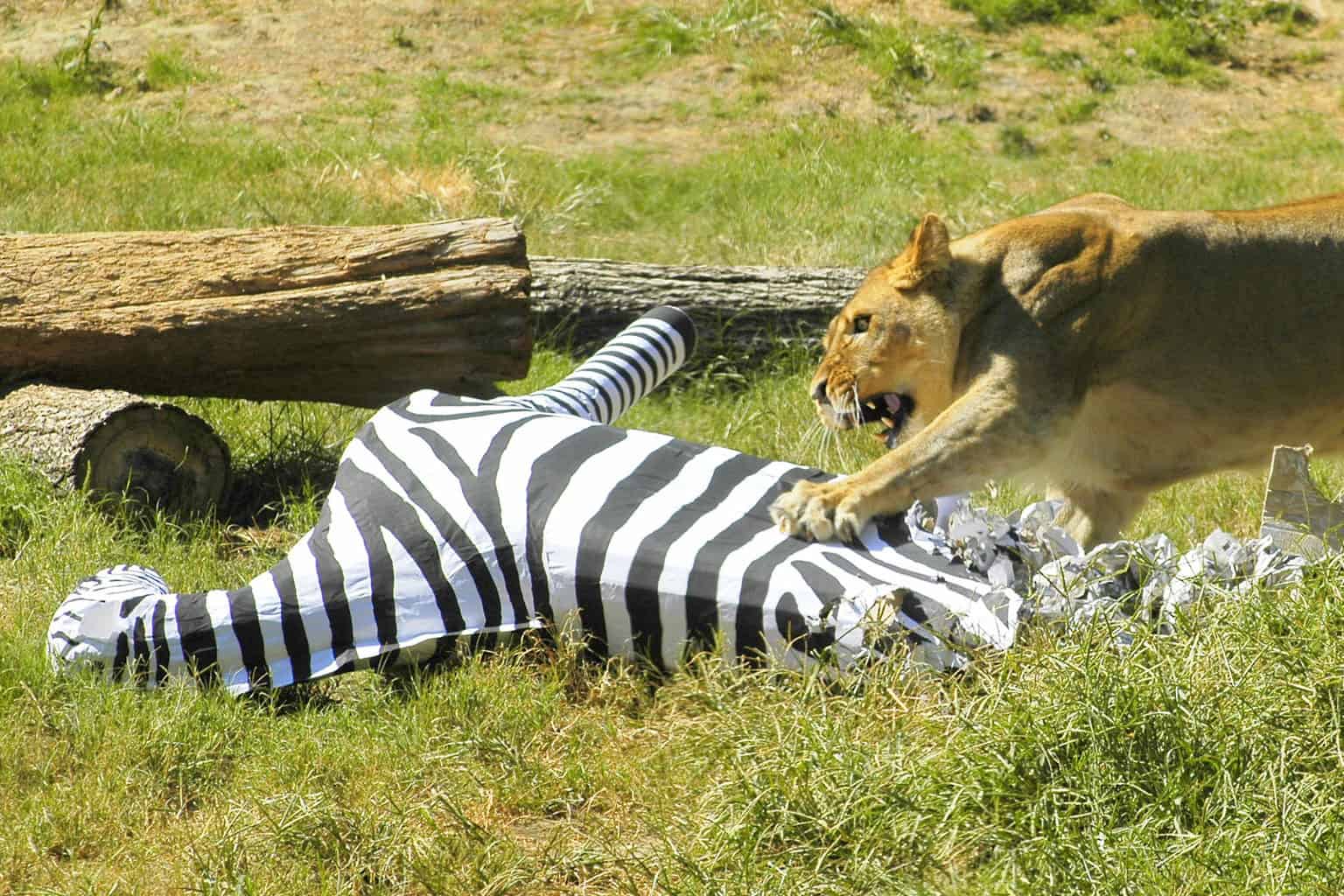20
August, 2017
Life with dogs
Enrichment
Training & Behaviour
Enrichment refers to the manipulation of the environment to stimulate mental and physical activity of an animal.
You might have seen footage of keepers creating puzzle toys with food inside for animals in captivity. They generally take a long time to construct to withstand the rigours of big cat play, and you may be thinking that it’s not something you could or even really need to do.
While pets might not suffer from the same problems as wild animals in captivity when we compare the general levels of activity between the average pet dog and their wild cousins there is a large disparity. Dogs spend a large part of their day lying around with not a lot to do. Wild or even feral dogs see many more challenges in a day such as hunting and scavenging. They experience the stimulation of anticipation and exploration when tracking or foraging and the excitement and satisfaction of finding a food source at the end. Then they nap to recover from all the activity before starting all over again.
“compare the general levels of activity between the average pet dog and their wild cousins there is a large disparity.”
Incarcerated humans tend to live a life that rarely changes and as a consequence become highly motivated to experience any kind of stimulation. Humans can communicate their boredom, our dogs cannot. And while I’m not saying that a pet dog’s life is like that of a prisoner, generally all decisions about what will happen in his day is taken by someone else, he has little control if any, to access stimulation. Often when he does come up with games or activities of his own making (I tend to call this “going self-employed”) it rarely takes a form that his owner appreciates.
Surviving takes lots of exercise and constant problem solving and while our dogs might not have the need to survive in the evolutionary sense the behavioural repertoire that would allow our dogs to survive still exists. In the past we have used these behaviours to our advantage, and have actively bred for them and enhanced them in some breeds. This has left us with the situation where dogs have been bred to for specific purposes that in many pet homes will never be fulfilled. Boredom can ensue.
A bored dog might end up making his own kind of fun which is one kind of problem (for us, not generally the dog). However it can also lead to more serious consequences that are a problem like repetitive behaviours or the over reaction to events and stimuli resulting in fear or aggression. Whilst emptying the bin, barking at the garden fence and chewing on the furniture are not ideal, these behaviours in themselves are not generally detrimental to the dog’s well-being (depending on the owner’s reaction). Self mutilation from over grooming or tail chasing, fly biting, repetitive barking or spinning are not uncommon behaviour problems however that can reduce the mental and physical health of the dog.

Dog barking through fence
Bored dogs seem to crave stimulation; dogs housed in kennels that were given food toys became more active but barked less (Schipper et al, 2008). Food toys may also slow down a dog’s cognitive decline with ageing (Milram et al, 2005).
Living in a home environment most dogs receive some kind of stimulation, even if it’s just from their daily walk. Even with the best of intentions though it can be hard to provide the level of activity that a dog might require when we are so busy ourselves.
So what can we do?
I’m glad you asked! I’ve created a booklet full of enrichment ideas for dogs that can easily be included in your daily routine.
To help you even further I’ve created a planner too that you can use to make it easier to include those activities that require a little bit of forethought before you can make them happen.
As the booklet shows, enrichment doesn’t have to be difficult or take up hours of your time. Many of the activities are designed for your dog to puzzle out on his own, so if you are busy you can use those to entertain him while you do what you have to. There are some mutual activities to enjoy together – I just ask that you include some of those each week too and enjoy the time with your dog learning about how he investigates and responds to the world around him.


